Colic is called sudden cramping and sharp pain caused by spasm of the muscles of the organs. abdominal cavity and retroperitoneal space. Such fights usually quickly follow each other. Depending on the location of the spasm, colic can be intestinal, hepatic (biliary), pancreatic (pancreatic) and renal.
Causes of colic
The causes of colic depend on their type. The most common is intestinal colic. It can be provoked by malnutrition, excessive consumption of fatty and poorly digested foods, as well as inflammatory diseases, scars and adhesions of the abdominal cavity. Intestinal colic can also be caused by fermentation and putrefactive processes, as a result of which excessive gas formation and stretching of the intestinal walls appear. Poisoning and intoxication also cause colic - for example, lead poisoning.
The causes of biliary (hepatic) colic are diseases of the biliary tract, as well as impaired outflow of bile. Pain occurs due to the rapid contraction of the smooth muscles of the gallbladder and ducts. It occurs when the bile sand encounters obstructions in the bile ducts. It can be mucous plugs with cholecystitis, tumor diseases or dyskinesia (impaired motor functions of the biliary tract).
Pancreatic colic is a consequence of a sharp increase in the volume of pancreatic juice or a violation of its chemical composition. The reasons for this are overeating, consumption of fatty, meat and spicy foods, drinking alcohol. These factors cause the development of inflammation of the mucous membrane of the stomach and duodenum.
Renal colic occurs when an obstruction suddenly arises in the way of outflow of urine from the renal pelvis. Other causes may be kidney stones or hard crystals moving through the ureter, a kink in the ureter, or inflammatory disease.
Found a mistake in the text? Select it and a few more words, press Ctrl + Enter
colic symptoms
Just like the causes of colic, its symptoms vary by type. Intestinal colic is manifested by bloating, excessive gas formation, sharp cramping pains. Nausea, frequent, often false tenesmus (urge to defecate) are possible. Colic following lead poisoning is characterized by severe attacks of pain and prolonged constipation. The patient's abdomen is pulled in, the muscles are tense, a gray border may appear on the gums.
With hepatic colic, the pain is localized in the region of the right hypochondrium, radiates to the upper abdomen, right subscapular region and shoulder. In addition to these symptoms, dry mouth, bitterness, nausea and vomiting are characteristic. Body temperature may be elevated. Attacks of pain in hepatic colic can last from a couple of minutes to several days. They appear most often at night, after a heavy intake of spicy and fatty foods.
Pancreatic colic is manifested by girdle pains localized in the upper abdomen. Attacks are combined with other symptoms of indigestion. The patient has belching, vomiting, diarrhea, bloating, etc. Pancreatic colic may be a manifestation of pancreatitis or pancreatic tumors.
Symptoms of renal colic are very severe pain in the abdomen and lower back. They can give to the groin and genitals, accompanied by frequent and painful urination. Pain may occur after physical labor, sudden long movements, or shaking while driving. In addition, renal colic is characterized by bloating, tension in the muscles of the abdominal wall.
Colic treatment
Treatment of colic should begin after the doctor finds out its cause. Intestinal colic can take place after exposure to heat, but such procedures are categorically contraindicated in appendicular colic. Renal colic can be eliminated with a hot bath, but with pancreatic colic this can cause serious complications.
Pain in colic is relieved mainly with the help of no-shpa, papaverine, halidor, platyfillin. But antispasmodics are appropriate to use only after the main cause of colic has been eliminated.
Colic in the right side is a condition so acute and painful that thinking about whether to call an ambulance is inappropriate. The situation is complicated by the fact that it is in this part of the abdominal cavity that the internal genital, urinary and digestive organs are located, so the pain can “spread” throughout right side and give to places located near the affected area.
Only a qualified specialist can diagnose the disease, but depending on the nature and location of the painful sensations, you can determine it yourself.
Causes of colic in the right side
In order to accurately identify the causes of colic in the right side, you need to pay attention to which part of the pain is the most acute. Depending on the localization, there are three types of colic: hepatic (or biliary), renal and intestinal.
Hepatic (biliary) colic
Sharp, sudden pain in the right hypochondrium, radiating to the right shoulder and scapula, which gradually covers the entire abdomen - an attack caused by chronic or acute diseases of the liver (hepatitis) and the biliary system (cholecystitis, biliary dysmotility).
intestinal colic
Colic in the right side, felt in the lower abdomen - the cause of intestinal diseases (appendicitis), less often - female genital organs (inflammation of the fallopian tube or ectopic pregnancy). The pain occurs due to the abuse of fatty and improper food, but poisoning, intoxication, scars and adhesions in the peritoneal cavity and their inflammation can also be the cause.
Renal colic
If colic in the right side is given to the back, then these are signs of kidney disease (tumor, pyelonephritis) or ureters.
The reason is the omission of the kidney, a violation of the outflow of urine due to the movement of stones and dense crystals in the kidneys, blockage of the ureter with a blood clot. Most often, renal colic is associated with physical exertion, long walking or bumpy driving.
Colic in the right side is a symptom that brooks no delay in visiting a doctor. And the nature of the pain may indicate the danger of the situation.
Relatively easily tolerated are colic of an increasing nature, since they are a sign of the inflammatory process of one of the organs of the right hypochondrium.
- Acute cutting pains indicate rupture of formations, intra-abdominal bleeding and the appearance of a hole in one of the affected organs.
- Pain of a cramping nature indicates damage to one of the hollow organs.
Symptoms of colic in the right side
Colic in the right side usually occurs suddenly, attacks of pain are distinguished by their severity and quickly follow each other.
Depending on the localization of colic, the accompanying symptoms manifest themselves in different ways.
Hepatic colic pesters the patient often in the afternoon or at night and may be accompanied by:
- Vomit.
- Bloating.
- Dryness and bitterness in the mouth.
- An increase in temperature.
- Increased sweating.
With intestinal colic, the pain has a sharp cramping character and decreases with pressure on the abdomen. It is characterized by:
- Nausea.
- Vomit.
- Bloating.
- Excessive gas production.
- Feeling of distension.
- False and painful tenesmus.
In case of lead poisoning, intestinal colic is accompanied by a retracted abdomen and tense muscles, a gray border on the gums.
Pain in renal colic is considered to be the most severe; sharp and bursting, they are localized in the lower back from the side of the affected kidney and with increasing force give to the hypochondrium, lower abdomen, navel and groin, genitals. During attacks, the patient behaves restlessly, and constantly changes the position of the body. In addition, the accompanying symptoms are:
- Bloating.
- Constipation.
- Frequent and painful urination.
- Vomiting that occurs simultaneously with sharp pains.
Treatment of colic in the right side
Regardless of which organ is affected, during unbearable colic in the right side, it is necessary to take antispasmodic and antihypertensive drugs:
- nitroglycerin (one tablet under the tongue or three drops per sugar cube).
- no-shpa (two tablets no more than three times a day).
In order to urgently alleviate the suffering that colic brings to the patient in the right side, they also resort to the introduction of drugs intramuscularly and subcutaneously:
- 1 ml of a 0.1% solution of atropine and 1 ml of promedol.
- 5 ml of baralgin and 2 ml of no-shpa.
- platifillin (subcutaneously 1 - 2 ml 1 - 2 times a day).
- papaverine (adults and children over 14 years old - one or two tablets or 0.5-2 ml of a 2% solution subcutaneously / intramuscularly no more than three times a day, for elderly patients - 0.5 ml).
If the cause of colic is not dangerous (for example, when overeating), then it is enough to take painkillers and follow a diet - within six to twelve hours after an attack, you can eat only stale bread and drink weak unsweetened tea.
Often, the pain syndrome with colic in the right side is so acute that only an anesthetic blockade (chipping the lesion with potent drugs) and further integral hospitalization can cope with it.
Treatment of hepatic colic
With hepatic colic on the upper abdomen, you can make a warm compress or apply a warm heating pad for 5-10 minutes. You can not take choleretic drugs and medicinal herbs.
Since acute attacks are most often caused by the movement of stones in gallbladder, surgical intervention is mandatory (today, with the help of an endoscope, such operations take place without an incision) and a strict diet with a restriction of spicy, fatty and fried foods, sweets.
Treatment of intestinal colic
To standard antispasmodic drugs, you can add one or two tablets of dry belladonna extract. Cope well with intestinal colic teas from yarrow and cumin, valerian and motherwort. An enema is shown (one glass of heated infusion of mint or lemon balm). With intestinal colic, thermal physiotherapy is prohibited and a diet must be observed with the exception of hard, spicy and fatty foods.
Treatment of renal colic
In an acute attack of renal colic, the patient is immediately hospitalized in the surgical department, where an operation is performed to remove the stone (ureter catheterization, dissection of the mouth over the strangulated stone).
However, in the case when the stones are small, they can move away spontaneously if the patient assumes a horizontal position. In addition to drug treatment, a warm bath and a heating pad on the lower back are indicated for renal colic.
Do not forget that colic in the right side is fraught with serious consequences not only for health, but also for life, therefore, in no case should one resort to non-traditional (folk) methods of treatment without receiving a high-quality medical examination and without knowing the exact diagnosis.
The pain that occurs in the right side of the abdomen can be a symptom of a huge number of diseases, not only of the gastrointestinal tract, but also of other body systems.
Pain can occur acutely (sharply) or chronically (for a long time, sometimes for months and years).
Aching pain in right side may be a symptom of the following diseases:
Aching pain in the right side with right-sided renal colic
 Renal colic, most often, is a consequence of blockage (obstruction) of the urinary system. Obstruction is usually caused by either a stone or blood clots in massive bleeding.
Renal colic, most often, is a consequence of blockage (obstruction) of the urinary system. Obstruction is usually caused by either a stone or blood clots in massive bleeding.
Typical pain in right-sided renal colic begins on the right in the lumbar region. Appears piercing It's a dull pain in the right side, which can radiate (give) to the groin, genitals - in men it gives to the testicle, in women - to the clitoris, labia, thigh.
She is very strong, a person does not find a place for himself, constantly rushing about. Often appears along with pain nausea and vomiting, pale skin, increased heart rate. After the end of such an attack of renal colic, a dull aching pain appears in the right side of the abdomen, which disappears after a few (usually 1.5-2) hours.
Treatment consists in finding and eliminating the cause that causes pain (usually the removal of a calculus from the area that it clogged).
Aching pain in the right side with hepatic colic
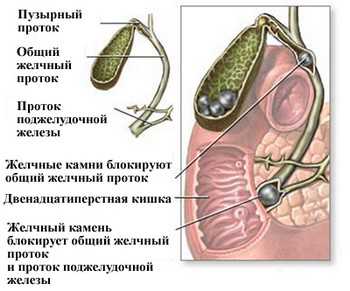 Hepatic colic is one of the important symptoms of gallstone disease. The cause of colic is a stone that is fixed in different areas bile ducts.
Hepatic colic is one of the important symptoms of gallstone disease. The cause of colic is a stone that is fixed in different areas bile ducts.
Often, pain occurs after a rich and high-calorie meal, but colic can occur without any provocation. In the classical case, there is aching pain in the right side under the ribs with irradiation to the right shoulder blade.
May be accompanied by nausea and / or vomiting, the person behaves restlessly. When joining cholecystitis, the temperature begins to rise and the pain during palpation of the gallbladder increases.
After an ultrasound examination of the gallbladder, the cause in 90% of cases can be detected and adequate treatment can be started, which consists in removing the calculus and treating concomitant pathology.
Aching pain in the right side with intestinal colic
 Intestinal colic is the main symptom of intestinal obstruction. The cause of obstruction can be different: from the formation of adhesions after operations and ending with femoral hernias.
Intestinal colic is the main symptom of intestinal obstruction. The cause of obstruction can be different: from the formation of adhesions after operations and ending with femoral hernias.
In older people, the most common cause is volvulus of the sigmoid colon with compression of the mesenteric vessels, which leads to intestinal ischemia and its death. Pain in intestinal colic is cramping in nature. If there is obstruction of the small intestine, then you can hear the rumbling in the abdomen.
Most of the pain begins in the umbilical region or slightly lower. Moreover, at first it is of a cramping nature, but after a while the person complains that his right side aches. Similar uncomfortable sensations occur when the obstruction is localized in the right sections of the intestine. One of the first symptoms of intestinal colic is vomiting of the contents of the intestine.
After a survey radiography of the abdomen and identification of the localization of obstruction, surgical treatment is indicated.
Aching pain in right side with appendicitis
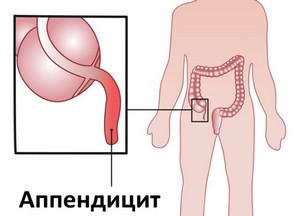 Appendicitis is the most common cause of aching pain in the right side of the lower abdomen. The pain, in the classical picture, is localized first in the umbilical region or 2.5-3 cm above and over time moves to the right iliac region, first carrying an acute, and then aching character.
Appendicitis is the most common cause of aching pain in the right side of the lower abdomen. The pain, in the classical picture, is localized first in the umbilical region or 2.5-3 cm above and over time moves to the right iliac region, first carrying an acute, and then aching character.
Unpleasant sensations, as well as in intestinal pathology, are cramping in nature and are often combined with low-grade fever (temperature rise to 37-38 degrees), nausea and / or vomiting. A particularly characteristic sign of appendicitis, in particular if it is retrocecal, is pain in the lumbar region on the right.
After the diagnosis (plain radiography of the abdomen, ultrasound, diagnostic laparoscopy) and confirmation of the diagnosis, surgical treatment is indicated. It consists in removing the appendix (open or laparoscopic appendectomy).
Aching pain in the right side with diverticulitis of the ascending colon
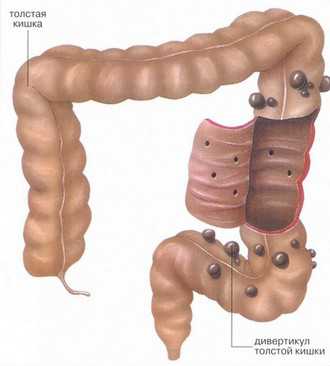 A diverticulum is characterized by a protrusion of one of the walls of the colon and often does not bother a person. When an inflammatory process appears, diverticulitis occurs and the first complaints appear that the right side aches from the bottom of the abdomen to the costal arch, the temperature has risen, and others.
A diverticulum is characterized by a protrusion of one of the walls of the colon and often does not bother a person. When an inflammatory process appears, diverticulitis occurs and the first complaints appear that the right side aches from the bottom of the abdomen to the costal arch, the temperature has risen, and others.
The disease begins with severe aching pain in the right iliac region, then nausea and vomiting join, the temperature begins to rise to 38 degrees. With such symptoms, melena (an admixture of blood in the stool) or an admixture of pus in the stool may appear. Sometimes an abscess can form and its rupture will lead to peritonitis, which aggravates the person's condition and the pain spreads throughout the abdomen.
After the diagnosis, either surgical treatment or therapeutic treatment is indicated, depending on the presence of complications.
In the absence of complications (peritonitis, abscess, fistula, stricture):
- A special diet with a high fiber content (vegetables, fruits), or an additional separate intake of fiber
- Plentiful drink
- With pain syndrome, antispasmodics are indicated - drotaverine, mebeverine
In the presence of complications - appropriate surgical treatment.
Aching pain in the right side with right-sided chronic adnexitis
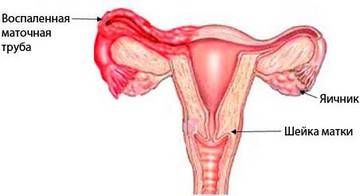 Right-sided chronic adnexitis is inflammation fallopian tubes and ovaries on the right, caused by a bacterial infection. The first complaint is that there is a constant aching pain in the right side.
Right-sided chronic adnexitis is inflammation fallopian tubes and ovaries on the right, caused by a bacterial infection. The first complaint is that there is a constant aching pain in the right side.
A woman's menstrual cycle is disturbed, algomenorrhea (painful bleeding) appears, pathological purulent discharge from the vagina - leucorrhoea. During sexual intercourse, the pain intensifies and for a long time are aching in nature.
If the inflammatory process passes to the peritoneum, peritonitis develops, which can later lead to infertility (the consequences of peritonitis - adhesions of the fallopian tubes).
Treatment is based on taking a course of antibiotics (usually cephalosporins), anti-inflammatory drugs and painkillers. With complications (peritonitis) - surgical treatment: first, sanitation of the abdominal cavity, and then drainage.
Aching pain in the right side with an intestinal infection
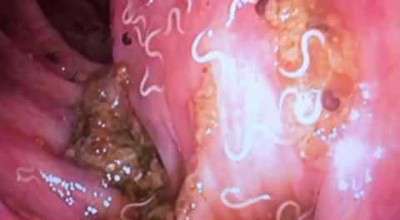 The cause of such pain may be helminthic invasion (pinworms, roundworms), inflammatory bowel pathologies (colitis, enteritis). In this case, the pain is quite strong, it is relieved by analgesics and may hold back a trip to the doctor for some time, which is fraught with consequences.
The cause of such pain may be helminthic invasion (pinworms, roundworms), inflammatory bowel pathologies (colitis, enteritis). In this case, the pain is quite strong, it is relieved by analgesics and may hold back a trip to the doctor for some time, which is fraught with consequences.
Along with pain, symptoms of general intoxication syndrome join:
- Headache and loss of appetite
- Sleep disturbance, anxiety
- Nausea and vomiting
- Increased fatigue and tiredness
Also, in 90% of cases, intestinal infection is manifested by diarrhea or constipation, in the presence of enterobiasis, perianal itching appears (pinworms lay eggs in the perianal folds, causing itching at night; itching is especially pronounced in children - they comb the anal area almost to the blood). After diagnosis, either antibiotic therapy or antihelminthic therapy is performed.
Based on all of the above, we can conclude that aching pain in the right side is a very important clinical symptom of a huge number of pathologies that can lead to very different and dangerous consequences. Therefore, it is very important to contact a specialist in a timely manner for proper and qualified assistance.
Intestinal colic is a pathological condition associated with the appearance of severe spastic pain with localization in the abdomen. Any type of colic is fraught with not only the danger of the appearance of symptoms of pain syndrome, but also the threat of the presence of a chronic or acute disease in the body. There may be colic in the right side and in the center of the abdomen, and on the left; localization, nature and strength of pain depend on many factors, including the age of the person, the presence bad habits, his food. Pain syndrome can affect both the female half of the population and men. In women, pathology is more difficult to diagnose because of the “female” organs located in the pelvis, and when diagnosing colic, damage to other organs and systems cannot be ruled out, as happens with unhealthy kidneys or back pain. Therefore, consider the topic: intestinal colic, symptoms in women.
In practice, signs of colic can be associated not only with damage to the intestines, but also to other organs. Dangerous appearance of renal, hepatic colic. But, unlike these conditions, an attack of colic associated with the intestines does not always indicate the presence of serious pathological conditions in the human body. Intestinal colic can be associated with stress, fear (when they say: the heart is in the heels), overwork, the use of "harmful" foods, alcohol. But in order to exclude chronic lesions that can progress, you need to be examined by a doctor. Only after a diagnosis has been made, treatment can be prescribed to avoid such a repeated phenomenon as colic in the side or in the center of the abdomen.
Reasons not related to diseases
First, consider the causes of the development of colic, not associated with diseases in the body. The syndrome of soreness in the abdomen can begin from the use of foods that are difficult to digest by the stomach and intestines. These foods include fried and fatty foods, smoked meats. That is why, in order not to expose yourself to the risk of developing colic in the abdomen, these products should be consumed in moderation.
The cause of pain in the left side or the center of the abdomen in the intestinal area may be the use of expired products. In most cases, after taking expired products, not only pain symptoms appear, but also stool disorders, nausea and vomiting. In severe cases, a person may be hospitalized in the infectious diseases department with a diagnosis of gastroenteritis.
In general, it is the malnutrition of a person that is a common cause of the development of colic in the intestines. For example, people who do not follow the diet, that is, eat what is called “on the run”, snack on “heavy” food in fast foods and cafeterias, suffer from attacks of pain. If you don’t eat anything all day, and then eat at night, then, in addition to the symptoms of heaviness that radiate to the right side, pain in the intestinal area may appear.
Pain in the left side or abdomen can be caused by eating foods that have not undergone heat treatment, or those that can cause intoxication [mushrooms, berries that are unsuitable for food]. It also happens after a person eats fish, meat. Physical inactivity, obesity can cause malfunctions in the work of the intestines. In a woman, problems with the digestive tract can develop due to hormonal disruptions during pregnancy, when the intestines are squeezed by the uterus.
Causes associated with diseases
Consider such an issue as intestinal colic, the causes of which are associated with malfunctions in the body, whether it be chronic foci or acute pathology. Most often, an attack of abdominal pain gives the presence of foreign agents in the human gastrointestinal tract. These causes include acute intestinal infections [AII].
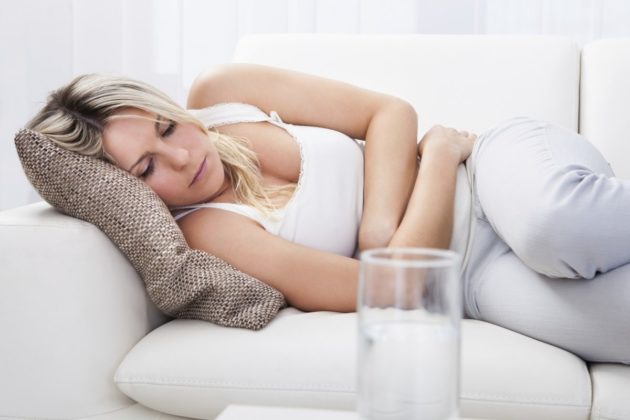
Gastroenteritis is caused by both pathogenic and opportunistic bacteria, occurs when contaminated products are consumed, and if the heat treatment of dishes is not observed. A person can also get sick by contact-household. IN this case intestinal function is disrupted, symptoms of intoxication appear [pain in the head, nausea, vomiting, fever].
Salmonellosis, although it is also equated with AII, is more severe. With salmonellosis, the symptoms develop acutely, there is pain, burning in the abdomen, and it can hurt both in the left side and in the center of the abdomen and even in the lower back. With salmonellosis, the body temperature rises to high numbers. It is not always possible to cure salmonellosis at home, but it is possible to “drive” the infection into a latent form. Then the person will be a carrier and will begin to infect the people around him.
Often accompanied by colic dysentery, and with symptoms similar to salmonellosis. Dysentery is also associated with the entry of the pathogen into the digestive tract, while the disease is characterized by stool with the presence of blood or mucus.
Among the pathological conditions leading to colic in the intestines, intestinal obstruction can be distinguished. With it, a person is disturbed by the removal of feces from the intestines, which is accompanied by a spasm. It can hurt both on the right and on the left of the abdomen. Many people have a question what to do with intestinal obstruction. The only answer is to see a doctor.
In general, if we consider colic, symptoms, then it is necessary to differentiate the pain associated with the intestines from pain in the lower back, as happens with infringement of the sciatic nerve, and also from renal colic, which women are more prone to.
There are also such causes of colic:
- helminthic invasions of the type of opisthorchiasis, ascariasis, giardiasis or enterobiasis;
- the presence of tumors in the intestine or adjacent organs;
- endured stress.
If you experience pain in the abdomen, whether in the right or left side, you need to see a doctor to diagnose this condition and exclude dangerous pathologies. And deviations can occur not only in the intestines and stomach, but also in the genitourinary organs, liver, pancreas, in the lower back with damage to the spine.
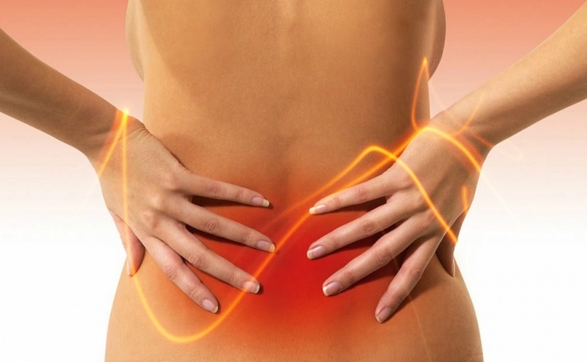
Symptoms
The main symptom of colic in the intestines is pain. Moreover, it occurs abruptly, which is associated with spasm. But the intensity of pain is different. For example, with intestinal obstruction, a person suffers from severe pain, which is why he takes a forced position - lying or sitting in a half-bent state. But when overeating or worm infestation, the patient may experience aching pain with a paroxysmal course. It is not uncommon for the pain to be so intense that the person feels as if a knife has been thrust into his stomach, at which point there is weakness in the legs [in the heels].
Most often, with colic, a person has bouts of nausea and vomiting. In pathological conditions in the intestines, bloating, signs of flatulence can be observed. The rest of the symptoms depend on the cause that caused the attack of abdominal pain.
If it hurts in the left side, then the cause of pain may be the large intestine. And also the irradiation of pain can move away from the stomach, the sphincter of Oddi, as happens with biliary colic. Colic on the right is associated with damage to the small intestine.
In addition, the liver, kidney, part of the genitourinary system can hurt. That is why, in order to find the source of the symptoms, it is necessary to undergo an examination. Symptoms can sometimes be so specific that without a comprehensive examination, you can miss a dangerous diagnosis. For example, there may be a combination of abdominal pain and heel pain in intestinal infections, which can lead to reactive arthritis.
Diagnostics
Before prescribing treatment, it is necessary to establish what gave such symptoms, that is, caused the syndrome of abdominal pain. When contacting a doctor, he must carefully collect an anamnesis. To do this, the duration and frequency of symptoms are revealed, it is established whether there were similar symptoms before, what the clinical picture of the disease is now. In addition, it is necessary to collect data on a person’s lifestyle, the presence of chronic foci, especially the attention is focused on damage to the kidneys, liver, and biliary tract. When a patient complains of severe pain, appendicitis cannot be ruled out, so the person is asked if the appendix was previously removed.
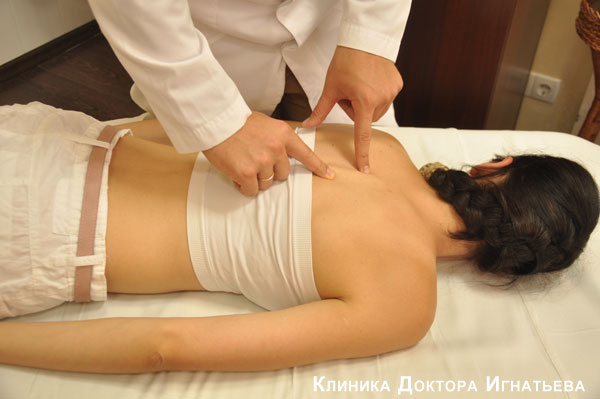
During the examination, the abdomen is palpated and the patient's condition is examined. Special attention is given to the skin, body temperature, lining of the tongue and mucous membranes. Of course, as with any disease of the internal organs, you need to take blood, urine, and feces tests, but with colic, the goal is first of all to establish a preliminary diagnosis. Therefore, the doctor prescribes an ultrasound of the internal organs, if possible, CT and MRI. It is also necessary to conduct an x-ray examination of the abdominal cavity. If intestinal colic is suspected, a colonoscopy, sigmoidoscopy may be prescribed.
Do not forget about the examination of the spine, especially when there is pain in the lower back. Causes back pain infringement of the nerve roots in osteochondrosis, hernia. An injury or stress can lead to a pinched nerve. And also in the lower back, the kidneys can hurt, which also give to the abdomen.
Treatment
Consider how to treat colic in the intestines. In general, with the appearance of pain in the abdomen of an acute nature, painkillers should not be given. Taking analgesics and antispasmodics can blur the clinical manifestations of dangerous conditions that require surgical treatment. Therefore, only a doctor can determine how to treat colic after making a diagnosis.
If there is an attack of pain in the intestines without the appearance of additional symptoms and passes without a trace, then you should not panic. Maybe the reason is stress, overeating, or a pinched nerve in the lower back. But if there is a disorder of the stool, signs of nausea, vomiting, then you need to see a doctor. If it is an intestinal infection, then the patient will be prescribed antibiotics, antimicrobials and detoxification therapy.
With severe pain, as they say, which is felt even in the heels, you need to urgently call an ambulance, do not take medicine until it arrives. Then the doctor will tell you how to cure the cause that caused the attack.
If the cause of colic is associated with chronic diseases of the digestive tract, then a diet is first prescribed. During the period of exacerbation, the use of fried meat, fish, eggs, alcohol, smoked meats, and spices will have to be excluded from the diet. The diet includes dairy products, especially cottage cheese, yogurt, kefir and fermented baked milk. Every day you need to eat more vegetables [potatoes, beets, cucumbers], fruits.
From the recipes of traditional medicine, you can give recipes that include beets and ginger. The recipe consists in preparing a drink from 0.5 teaspoon of crushed ginger root, which is poured with boiling water. After that, beets or cabbage are added to the drink, from which you can first prepare the juice.
The main rule for colic is to seek medical help in a timely manner, which should not be forgotten when there is severe pain in the abdomen, especially if the cause is in the kidneys or pancreas, you should not hesitate.
There is an expression: "Laugh until colic." Undoubtedly, laughter prolongs life and improves mood, but having experienced colic once, it is unlikely that anyone will want to experience it again, even if the reason is laughter.
What is colic? These are attacks of sharp pain caused by spasms in a hollow organ. Most often occurs as spasms of the abdominal organs. Although the latest edition of the International Classification of Diseases (ICD-10) refers mainly to renal colic, in this article we will talk about their other types.

Colic refers to attacks of sharp pain caused by spasms.
There are colic stomach, intestinal, bilious. The latter type occurs most often when stones pass through the bile ducts. Causes of gastric and intestinal colic - in diseases of the stomach, an attack can also provoke stagnant masses of feces in the intestines. Separately, colic in children can also be distinguished, in other words, infantile colic, which occurs after birth and is due to the underdevelopment of the stomach.
Colic is painful and uncomfortable, but it can be relieved and stopped. The main thing is a timely visit to the doctor.
Causes of colic
Colic, in fact, cannot be considered as a disease. It is rather a symptom of other diseases, as well as the body's reaction to irritants.
The main cause of colic is a malfunction in the digestive tract. If a person has gastritis, an ulcer, or a disease of the pancreas, abdominal colic may occur. Due to diseases of the stomach, there are also colic in the left hypochondrium, which many confuse with pain in the heart, with angina pectoris. In general, there are many organs on the left under the heart, so you need to listen carefully enough to the body to understand which one bothers you. If colic occurs in the left side from above, then the problem may be in the stomach, intestines, pancreas, spleen, diaphragm. If you are concerned about acute pain in the left lower abdomen, the cause may be appendicitis, in which case you should immediately call an ambulance.
In addition, due to certain diseases of the stomach, the process of digesting food is disrupted, which can cause colic in the intestines. If someone dined on not too fresh, “fermented” food, this can also cause colic. They cause spasms in the gastrointestinal tract and pathogenic bacteria that enter the body along with spoiled or insufficiently processed food.
Symptoms
The main symptom of colic, as already known, is a sharp and severe pain that comes in waves. In addition, it should be said about heaviness in the abdomen, bloating, flatulence, a feeling that the stomach is bursting. The abdominal area is hard, painful sensations occur when palpated. Colic of each type has some differences.
Biliary colic can cause nausea, vomiting, and a feeling of bitterness in the mouth. If a person has renal colic, the symptoms, respectively, will occur in the kidney area. With hepatic colic, pain will be felt in the lower abdomen on the right - where the liver is located.
It is important to remember that during colic, body temperature remains normal. Therefore, if you have similar symptoms and have a fever at the same time, call an ambulance immediately. These can be serious illnesses - for example, inflammation of appendicitis.
Diagnostics
Who to contact for colic? Since the most common cause such pains are diseases of the gastrointestinal tract, then most often you should contact a gastroenterologist. If a person suspects that acute attacks of pain could cause abdominal injuries, then it is necessary to contact a traumatologist. Colic in infants can be diagnosed by pediatricians, and colic in pregnant women should be treated by a gynecologist.
In the process of diagnosing colic, the doctor will establish the main cause of pain and will be able not only to stop colic at the time of the patient's treatment, but also to completely rid the patient of them.
As in all other cases, the diagnosis of colic begins with an examination. For intestinal colic in adults, a fecal analysis is prescribed to find out the state of the microflora of the stomach, check the feces and for the presence of worms. With gastric pain, gastroscopy is quite likely. A urinalysis may also be prescribed, which will tell about the condition of the kidneys. A blood test will show the general condition of the body, possible inflammatory processes. To a large extent, the diagnosis of colic depends on which organ the pain occurs in. He will be examined by a doctor.
Infant colic
Infant colic, or colic in infants, should be taken out in a separate section of the article because this is the first rather difficult problem that about 30% of young parents face. Yes, this is the number of newborn babies suffering from colic. The most common cause of this is the underdevelopment of the intestine. The child's way of eating is changing, the stomach is still cone-shaped, and the intestines are absolutely sterile and are just beginning to adapt to work in new conditions - all this provokes colic until the work of the gastrointestinal tract of the newborn improves.
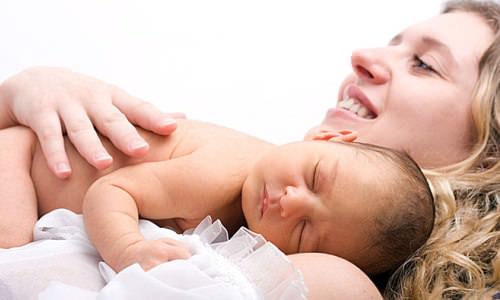
About 30% of parents experience colic in babies
The causes of colic in babies are numerous. And the main one is mom's nutrition. Breastfeeding women must adhere to the recommended diet. Influences the content breast milk And psychological condition mothers. Many women have a hard time postpartum period recovery, and the stress experienced by the mother is reflected in the milk.
It has also been noticed that if mothers were forced to take antibiotics after childbirth, their babies are more prone to colic. There is another theory: if during pregnancy the uterus is often in good shape, this indicates an excessive presence of certain hormones, which can then cause colic in infants.
In addition, many pediatricians tend to believe that colic is the result of external factors affecting the work of the gastrointestinal tract. Having changed their habitual habitat, a newborn baby reacts very sharply to climate change. He feels bad from high or low air temperature in the room, he feels worse in a stuffy room, with too dry air. You need to be attentive to the child and remember that the best temperature for him is not lower than 18 degrees and not higher than 23. The air should be moist, fresh, diapers should always be clean, and clothes should be selected according to temperature. It’s not worth dressing children too warmly, it’s better to cover a sleeping baby with a blanket - it’s more comfortable.
The main symptom of colic in babies is prolonged crying. The child tightens his legs, blushes, pushes, arches, while the tummy is firm. Gas or feces do not come out for a long time. Most often, these symptoms appear in the evening, colic can last up to 3 hours. If this happens almost daily. In this case, doctors diagnose "infant colic".
How to help a child? Medically, without consulting a pediatrician, nothing can be treated in a newborn. You can bathe your baby in warm water to relax the muscles. Many parents praise the method of laying the baby on the mother's or father's stomach. Feeling the warmth of the parent, the baby relaxes, the tummy warms up and the pain disappears. Massage for colic is also possible. It is performed in the tummy area, clockwise with a slight pressure in the lower part, closer to the intestines. If you encounter the described problem in the first month of a child's life, be sure to tell the visiting nurse about it or contact the pediatrician immediately. A doctor's consultation will never be superfluous. In addition, you may be prescribed a special medicine that reduces the amount of gas in the intestines.
Treatment
Treatment of colic in adults depends on the cause of the disease. Let's start with how to relieve colic. If you are at home, take a warm relaxing bath - the water should ease the cramps. You can not put a hot heating pad on your stomach. On the contrary, if you have biliary colic, they advise a heating pad with ice on the painful area. At this time, you can’t eat or drink anything, you need to loosen the belt of your trousers so that nothing presses on your stomach, you can take mint or menthol chewing gum to relieve nausea. If it is suspected that the cause is poor-quality food and you can take painkillers, keep in mind that the pills can cause vomiting.
Further treatment will be prescribed by the doctor after the diagnosis. For example, if these are pains caused by eating poor-quality food, most likely, the specialist will advise you to drink the drug "No-shpa" - an antispasmodic that also acts on the intestines. Drugs to improve the functioning of the gastrointestinal tract in a single dose will also help. It can be, for example, "Smekta". Good to drink warm teas from mint and lemon balm. With decoctions of the same plants, you can make an enema if colic is accompanied by constipation. Usually, after such simple manipulations, colic subsides.
When the reason pain due to illness, poisoning, then the doctor first of all treats the person from the underlying disease, in parallel eliminating the colic itself. If you were poisoned, for example, with chemicals, suffered an infectious disease, then the doctor will prescribe antibiotics, antiviral and anti-inflammatory drugs for the intestines. In case of serious poisoning, an enema will be prescribed to quickly get rid of food waste and intravenous drips to cleanse the body.
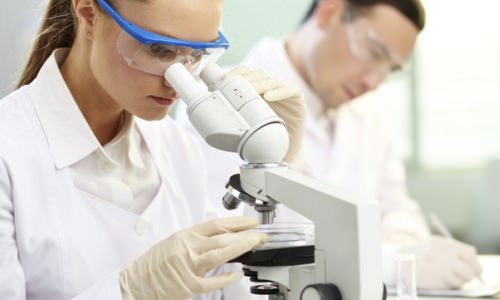
To prescribe treatment, it is necessary to conduct a series of laboratory tests.
The cause of colic can be intestinal obstruction, in which a person has constipation, nausea. Vascular colic is also possible, when pain is felt all over the abdomen after eating, with nausea, vomiting, and a headache. Do not self-medicate in this case, it is dangerous. If you suspect these diseases, you should call an ambulance. Treatment will be prescribed by a doctor in a hospital after diagnosis.
Be sure to follow a diet during treatment. For the first 10 hours, it is better not to eat or drink anything at all. herbal tea sugarless. In extreme cases, it is allowed to satisfy hunger with a few crackers. Further, it is better to take light, low-fat foods, try to avoid foods that cause flatulence, such as beans, cabbage of any kind, citrus fruits, onions, peppers.
Reduce salt in dishes, try to boil vegetables, as raw vegetables can provoke the formation of gases. Fried, smoked, spicy, carbonated drinks also contribute to bloating. Drinks with a high content of acids, tea, coffee, alcohol - all this is the cause of gases.
Interesting fact- the cause of colic can be chewing gum. The fact is that when chewing it, air enters our stomach, which then creates discomfort. So limit its use, using only to clean the mouth.
The best diet for anyone who suffers from frequent colic is the diet of lactating women, which they adhere to in order to protect both themselves and the baby from gas. Such nutrition will be an excellent prevention of spasms and bloating.
Folk remedies
Almost every disease can be treated with folk methods. most famous folk remedy for colic is fennel tea. For its preparation, seeds of a certain variety of dill are used. This tea is sold in pharmacies and is intended for infants. With colic in adults, you should simply brew a stronger drink.
ethnoscience assures that the spasm will pass if you drink a decoction of ordinary dill seeds in milk (in the ratio of a tablespoon to a glass of milk).
With biliary colic, it is good to drink freshly squeezed carrot juice in a glass before each meal. It relieves inflammation and improves bowel function.
Popular in the treatment of colic and decoctions of herbs. Oak bark, angelica and calamus (a tablespoon of each ingredient) are brewed with a liter of boiling water and infused for about an hour. Take 2 tablespoons three times a day. The decoction relieves spasm, eliminates swelling.
One more good recipe, which helps with biliary colic, is a decoction of chamomile, sage and centaury. A teaspoon of each herb is poured with a glass of boiling water, defended, filtered and drunk a teaspoon of infusion every 2 hours.
Herbalists advise taking motherwort juice to relieve spasms. Dilute a teaspoon of juice in 100 grams of water and take before meals.
In addition to herbs and medicines, food will help. For example, raw pumpkin, apples, artichokes have a good effect on the intestines, prevent bloating, cramps, relieve inflammation.
And, of course, it is impossible not to remember that the best treatment is the prevention of the disease. Therefore, diet and proper nutrition should not be neglected. Take care of yourself and live without diseases!
Video
